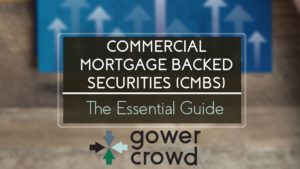The Impact of Crowdfunding on Real Estate Waterfall Structures
By Adam Gower Ph.D.
Waterfall calculations are used by real estate developers to calculate distributions to investors during the life cycle of a project and there have been some notable shifts in how they are structured since the emergence of real estate crowdfunding – with significant implications.
One trend is the way investors are driving how sponsors underwrite and present their deals, the tail wagging the proverbial dog, and another pertains to the co-investment a sponsor puts into a project to align interests with investors. As you will see in this article, when these two factors converge pricing is driven upward by hyper-supply of liquidity, risk increases, and we enter the last throes of the cycle.
Show Me the IRR!
In earlier recovery phases of real estate cycles, those periods following downturns and recessions, investors are enticed back into real estate with the promise of higher returns to offset the perceived excess of risk. Furthermore, the opportunity to invest in ‘distressed’ deals that are available at discounts to peak values motivates investors who expect higher returns founded upon the bargain pricing they see. As the economy recovers, opportunistic investments diminish in frequency, and expectations are for returns to gradually reduce. Even so, sponsors continue to attract investors because margins become tighter for everyone as the market reaches equilibrium.
The real estate crowdfunding paradox is that the driving force behind investor decisions to invest in individual deals is the IRR. Institutional and other sophisticated investors understand that returns diminish as the cycle prolongs and set expectations accordingly; crowd investors as a group do not – yet.
Retail investors, those coming into real estate investing through crowdfunding platforms, are signaling to sponsors that they think differently. In recent investor surveys conducted by some of the major crowdfunding sites, investors reported being primarily driven by IRR – the higher the better. Reinforcing this quantitative result, crowdfunding websites anecdotally report that projects with the highest projected IRRs tend to have significantly higher webinar attendance suggesting investors are chasing maximum returns even if disproportionate to what would normally be expected.
This is counter indicative of the stage of the cycle we are currently in. Lower, not higher IRRs signal the natural trajectory of prudent underwriting and yet sponsors know that to attract crowd investors they must offer projects with only the highest relative IRRs or lose investors to someone else’s deal.
Consequently, there is a rush to compete with headline IRR numbers. Crowdfunding sponsors know that the sponsor with the biggest IRR wins. The danger of this is that it can motivate sponsors to ‘stretch’ underwriting assumptions to deliver higher headline IRR numbers to attract the unwary investor. This leads to an unnatural inversion of the IRR curve where competition for investor capital drives up projected IRRs during the latter stage of the cycle.
This is a sure sign of a market that is overheating.
> Learn real estate industry standards and norms in this short video as Adam Gower Ph.D. discusses data never seen before.
The Law of Diminishing Co-Investment
Another anomaly as the market goes into its final upward lurch is related to the co-investment sponsors contribute to projects. The co-invest is the risk capital a sponsor personally contributes to a project as part of their alignment of interest with investors.
Investor Management Services, (IMS), the leading investment management software company in the industry, has noticed that the amount sponsors co-invest in projects varies with the market cycle. In the early part of a recovery when perceived risk is higher and yet actual risk is lower, sponsors are expected to contribute more to ensure a closer alignment of interest with investors.
As risk climbs inexorably towards the end of the cycle as pricing reaches peak levels and supply moves to hyper supply conditions, perceived risk diminishes, and yet, IMS observes that sponsors are required to put in less and less of their own money.
Bubble Blooming
As these two factors converge, irrational IRR inflation and reduced sponsor co-investment, expectations rise, interests become misaligned between sponsor and investor, risks expand and pricing increases – classic indicators of the final stages of a rising bubble.
To alleviate the risks of getting caught up in these dynamics, investors can pay attention to the credentials of a sponsor, particularly their experiences during prior recessions, and to resist the temptation to seek out only the project with the highest, shiniest IRR projections. The best projects may well be those with lower IRRs because their sponsors are taking a cautious approach as we near the end of the cycle and could be those most likely to survive the inevitable downturn.
***
Investors are concerned about the stage of the market we are in and are becoming increasingly cautious about where they place their capital. Addressing investor concerns like these and others upfront marks the beginnings of an effective and sustainable capital raise and the way to execute on that, since regulations changed permitting it for the first time, is online.
If you’d like to see how you can raise capital online and get a completely free action plan for your own online presence with actionable next steps, including how to address investors’ questions before they even ask, click here or on the link below to find out more.
Waterfall Articles Produced 
Serving real estate investment firms, Investor Management Services (IMS) is the leader in the investment management software space providing the only all-in-one platform. We enable our customers to better serve their investors while improving the efficiency of their firm. The IMS Platform includes an Investor Dashboard, Document Management and Sharing, Customer Relationship Management (CRM), and Waterfall Distribution Processing. For more information, please visit www.imscre.com.
If you have only just started in real estate development, have completed no deals, have no email list, but know you want the freedom and wealth being a real estate developer brings, then I suggest your first step is to start evaluating deals so you can recognize a good one when you see it.
Here’s where you should start. You’ll learn everything you need to know – the different types of real estate, different development strategies, how real estate cycles influence the market, and all about due diligence.
If you want to find deals and raise money for them so you can start your real estate development business, then learning how to conduct due diligence so you can pitch your deals better to investors is a great place to start.
If you’ve already purchased one or more real estate project and are seeing more opportunities than you can finance, then now is the time to start building your investor network so you can finance all your next deals quicker.
You’ve already got some momentum; now start finding and educating prospects about what you’re doing so you can build an email list of people to pitch to when you’re ready to raise money for your next deal.
This is what we build for private clients all the time – it’s called the Investor Acquisition System and you can access the entire program right here so you can find prospects, and convert them into being deep pocketed, repeat investors in your deals.
If you are a seasoned pro with multi-cycle experience, a substantial portfolio, a decent deal pipeline, and find yourself spending too much time raising equity capital because you’re still doing it in-person, then it’s time you put technology to work for you.
The wonderful thing about doing this is that you’re not going to be doing anything different than you’re already doing and, guess what, you’ll never have to sit through investor meetings again.
Sounds crazy I know, but I lay the whole thing out for you in this white board workshop where I personally show you exactly what it takes for you to transform your equity raising into a fully automated, capital raising machine so you can find new investors while increasing commitments from your existing network.
RELATED ARTICLES






